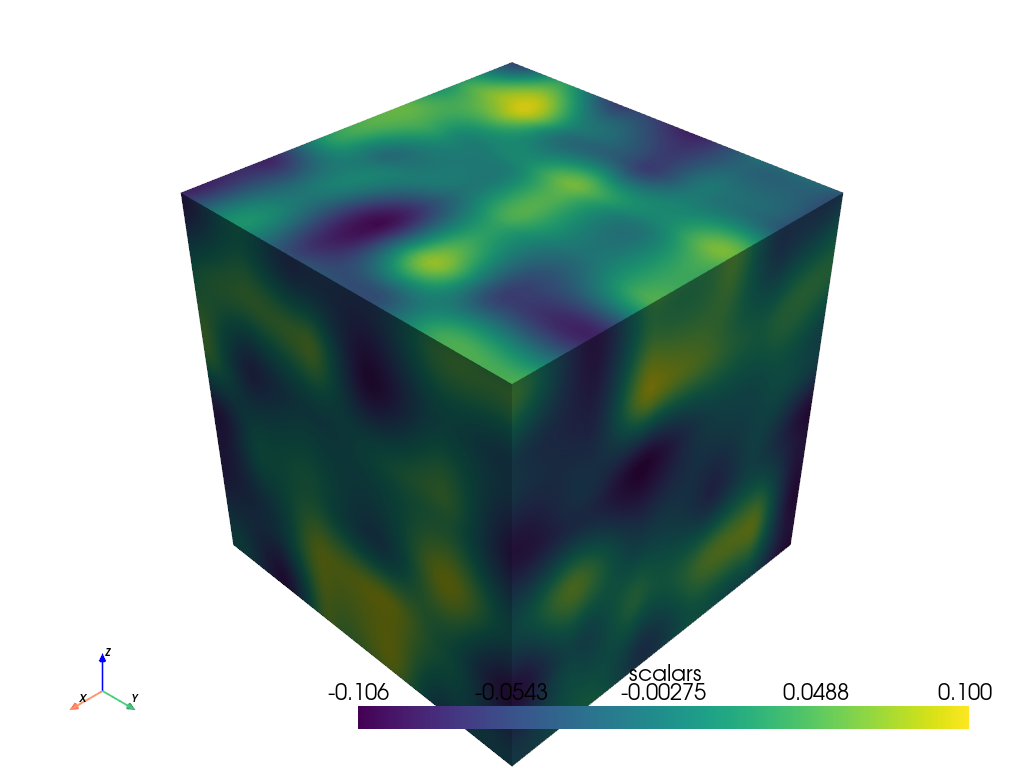pyvista.perlin_noise#
- perlin_noise( )[source]#
Return the implicit function that implements Perlin noise.
Uses vtkPerlinNoise and computes a Perlin noise field as an implicit function. vtkPerlinNoise is a concrete implementation of vtkImplicitFunction. Perlin noise, originally described by Ken Perlin, is a non-periodic and continuous noise function useful for modeling real-world objects.
The amplitude and frequency of the noise pattern are adjustable. This implementation of Perlin noise is derived closely from Greg Ward’s version in Graphics Gems II.
- Parameters:
- amplitude
float Amplitude of the noise function.
amplitudecan be negative. The noise function varies randomly between-|Amplitude|and|Amplitude|. Therefore the range of values is2*|Amplitude|large. The initial amplitude is 1.- freqsequence[
float] The frequency, or physical scale, of the noise function (higher is finer scale).
The frequency can be adjusted per axis, or the same for all axes.
- phasesequence[
float] Set/get the phase of the noise function.
This parameter can be used to shift the noise function within space (perhaps to avoid a beat with a noise pattern at another scale). Phase tends to repeat about every unit, so a phase of 0.5 is a half-cycle shift.
- amplitude
- Returns:
- vtkPerlinNoise
Instance of vtkPerlinNoise to a Perlin noise field as an implicit function. Use with
sample_function().
Examples
Create a Perlin noise function with an amplitude of 0.1, frequency for all axes of 1, and a phase of 0 for all axes.
>>> import pyvista as pv >>> noise = pv.perlin_noise(0.1, (1, 1, 1), (0, 0, 0))
Sample Perlin noise over a structured grid and plot it.
>>> grid = pv.sample_function(noise, bounds=[0, 5, 0, 5, 0, 5]) >>> grid.plot()
